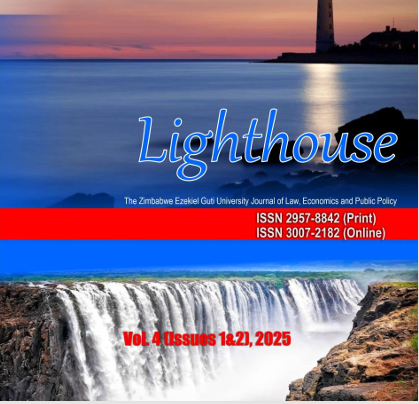Assessing the Convergence of Constitutional Reform, Judicial Precedent and International Human Rights Norms on Zimbabwe's Abolition of Capital Punishment
DOI:
https://doi.org/10.71458/f5a64z62Keywords:
rehabilitation, restorative justice, political landscape, reformism, social acceptanceAbstract
The abolition of capital punishment in Zimbabwe in 2024 marked a transformative moment on the country‘s legal and human rights landscape. The article examines the historical, constitutional and international factors that culminated in the Death Penalty Abolition Act, 2024, situating Zimbabwe‘s journey within global trends toward ending state-sanctioned executions. Drawing on qualitative analysis of interviews, the 2013 Constitution of Zimbabwe, key judicial decisions, comparative foreign law and international frameworks such as the Universal Declaration of Human Rights (UDHR), the article argues that abolition reflects both domestic advocacy and alignment with evolving global human rights standards. The study also evaluates arguments for abolition grounded in restorative justice, fairness and the irreplaceable value of human life. Furthermore, the essay discusses the societal and political factors that sustain capital punishment in Zimbabwe, alongside recommendations for continued alignment with acceptable international law norms. Emphasis is placed on the need for civil society engagement, legal review seminars and the establishment of alternative sanctions that align with international human rights standards. Ultimately, the article hails the abolition of capital punishment as a vital step toward respecting and upholding democracy in Zimbabwe.




